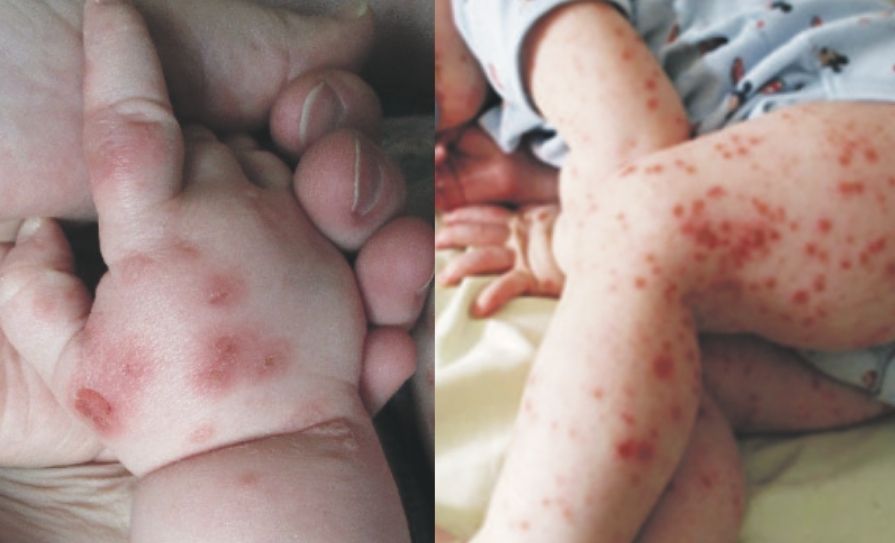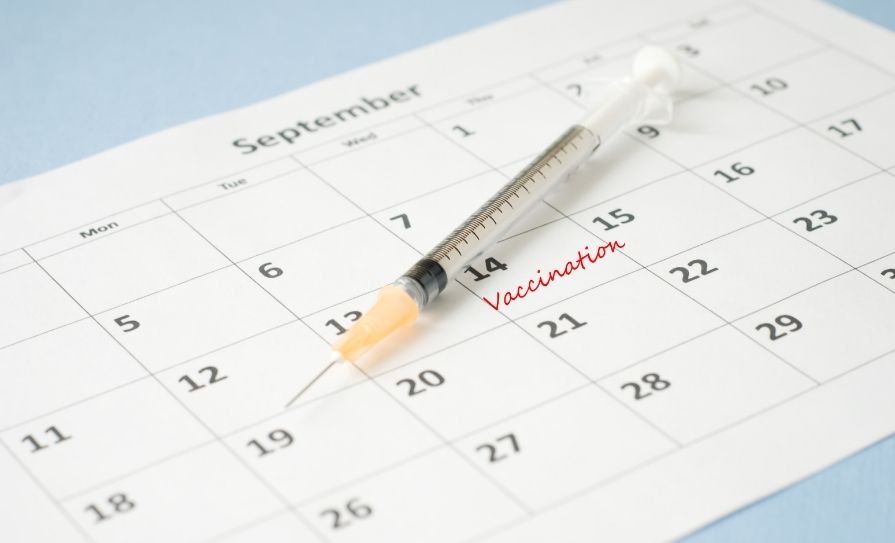According to the World Health Organisation (WHO), depression is now the leading cause of ill health and disability worldwide
Around the globe, more than 300 million people are living with depression, which represents an increase of more than 18 per cent between 2005 and 2015.
Over the course of a life-time, the risk of developing depression is between 10 and 17 per cent. In any given year, the risk is between 3 and 7 per cent. Depression is almost twice as common in women as in men.
Among people who present to emergency departments with mental health problems, depression is the key issue in one-fifth of cases. Depression is also common among all people who come to emergency departments, even for reasons apparently unrelated to mental health: approximately 30 per cent of all people attending emergency departments have suffered depression in the previous year.
Depression is associated with lower levels of education, smoking, anxiety, chronic fatigue and back problems. Almost one-in-four people who present to emergency departments with acute chest pain have depression and more than one-in-four elderly people who present to emergency departments for any reason have depression.
Depression is very common among hospital inpatients too. In England, 8 per cent of inpatients in medical wards have depression. In the US, the figure is almost 22 pr cent. Rates of depression may be especially high in patients with certain medical disorders: one-in-five patients with cancer have depression, and one-in-20 experiences suicidality. In patients with cancer, depression is associated with female gender, low levels of education, longer duration of disease, and higher levels of pain. Among medical inpatients, depression is especially associated with feelings of pessimism, worthlessness, loss of interest in others, and thoughts of death.
Depression is also common among inpatients on psychiatry wards and in psychiatric hospitals. In England, depression and anxiety account for more than a quarter of all psychiatric admissions. In Ireland, depression accounts for almost a third of psychiatric admissions each year.
Diagnosing depression in clinical practice
Depression can vary greatly between people. The symptoms and signs depend on the person’s general character, their life situation, any stresses triggering their depression, and various other factors. To assist with diagnosis, the WHO outlines a range of symptoms that are especially common features of depression in most people (Panel 1). According to the WHO, the symptoms should, for the most part, last for two weeks, but shorter periods are reasonable if the symptoms are of rapid onset or unusually severe.
There are three levels of severity in depression:
Mild depression features at least two of the following three symptoms: low mood, loss of enjoyment and interest, and increased fatigability. In addition, two other symptoms from the longer list in Panel 1 should be present, although not to an intense degree. The person with mild depression is distressed but does not stop functioning completely as a result of their depression.
Moderate depression also features at least two of the same three key symptoms: low mood, loss of enjoyment and interest, and increased fatigability. In addition, three or four other symptoms in Panel 1 are also present. These are commonly quite marked and cause notable difficulty with normal day-to-day activities.
Severe depression features all three of the key symptoms (low mood, loss of enjoyment and interest, and increased fatigability) and at least four other symptoms in Panel 1. At least some of these symptoms are present to a severe intensity.
There may also be other, more distressing symptoms in depression, such as delusions or hallucinations (eg, accusatory voices or smells of decomposing flesh). The person with severe depression may also feel very slowed down, with reduced bodily movement and a slowing of bodily functions (eg, loss of interest in sex).
These guidelines from the WHO are intended to assist with recognising depression. It is not intended that they be used in a ‘tick box’ fashion. They are best seen as a guide to the set of questions which need to be answered when we are deciding whether or not someone has depression. Some people without depression may have some of these symptoms. Some people with depression may have very few of them, but may have other symptoms which are not on the list.
Differential diagnosis of depression
When making a diagnosis of depression, the first possibility is that the person is not unwell at all, and is simply experiencing unhappiness as a result of day-to-day life. Going through the WHO list of symptoms should help with this distinction. In addition, various other possibilities need to be borne in mind:
Medical illnesses can cause many of the symptoms of depression; eg, thyroid problems, dementia (Alzheimer’s disease or Parkinson’s disease) or other medical illnesses.
Substance abuse problems can cause a range of psychological symptoms, including depression. The most common drug of abuse is alcohol, although cannabis and other illegal drugs may need to be considered.
Side-effects of a broad range of prescribed medications can include low mood. These medications include benzodiazepines (used for the treatment of anxiety), barbiturates (epilepsy), phenytoin (epilepsy), phenothiazines (schizophrenia), levodopa (Parkinson’s disease), statins (high cholesterol), digoxin (cardiac problems), diltiazem (cardiac problems), corticosteroids (asthma and other disorders) and various others.
Other mental illnesses may appear similar to depression, or include low mood as a symptom. These include anxiety disorders, panic disorder, post-traumatic stress disorder, obsessive-compulsive disorder, bulimia nervosa, anorexia nervosa, bipolar disorder and adjustment disorder with depressed mood.
As a result of the diversity of possible presentations of depression and the range of other diagnostic possibilities, depression is often missed or misdiagnosed. Some patients focus on bodily complaints (eg, pain) rather than psychological problems, and medical and psychological disorders often occur together in the same person, distracting attention from the mental illness. Finally, the young, the elderly, males, the rich and the unmarried are generally less likely to be diagnosed with psychological problems, so that particular attention needs to be paid to these groups in order to ensure that depression is not missed.
Psychological and social treatments for depression
Treatment of depression is based on a bio-psycho-social approach to management; ie there are ‘biological’ treatments (such as medication), psychological treatments and social interventions, all of which can be combined to suit any given person. It is especially important to monitor and manage any emergent suicidality.
Cognitive-behaviour therapy (CBT) is the most common psychological treatment for depression. This therapy focuses on the use of cognitive strategies (ie, strategies related to thinking patterns and habits) and behavioural strategies (ie, strategies related to actions and behavioural habits), in an effort to re-frame depressive thoughts, enhance coping strategies, reduce symptoms and promote recovery. Usually, the psychotherapist will meet the patient once per week and point out errors or unhelpful thinking patterns which may deepen or prolong depression.
Together, the patient and psychotherapist identify ways to address these errors and habits, and incrementally improve symptoms of depression. There is strong evidence that CBT is highly effective in the management of depression, generalised anxiety disorder, panic disorder, social phobia and post-traumatic stress disorder. For some patients with mild or moderate depression, the benefits of CBT can exceed those of antidepressant medication.
Interpersonal psychotherapy is another psychotherapeutic approach to depression which emphasises that the occurrence of depression is not the patient’s fault, and that the disorder has occurred in the patient’s specific psycho-social context, which is significant in terms of recovery. Interpersonal psychotherapy is a time-limited, manual-based, focused, pragmatic therapy which, like CBT, generally lasts for a few months and is undertaken with a trained psychotherapist. There is now strong evidence that interpersonal psychotherapy is highly effective in the treatment of depression, both on its own and in combination with antidepressant medication.
Therapies based on mindfulness, too, offer very specific benefits in depression. Mindfulness means paying attention to the present moment, simply and directly. It involves maintaining a careful awareness of thoughts, emotions and actions, but not judging them. There is now a strong evidence base for mindfulness-based psychological therapies for mild and moderate depression, anxiety disorders, self-harming behaviour and various other common problems.
There is also emerging evidence for mindfulness-based techniques for certain cases of substance misuse, obsessive-compulsive disorder and eating disorders. Properly used, mindfulness can help promote holistic health in chronic medical illness and deepen psychological care during cancer treatment and in terminal care settings. Most of all, specific courses of mindfulness-based therapies, provided over an eight-week period, are now accepted as effective tools for preventing relapse of depression.
Regarding social interventions, there are well-described relationships between depressive symptoms, stressful life-events and deficits in social support. Specific social interventions include provision of social support, increasing social engagement (ie, going out) and befriending services for people who are isolated, poorly-integrated and experiencing socially-disabling symptoms. For everyone with depression, a consideration of the social environment and graded social re-engagement is an essential step on the road to recovery. Self-help groups and organisations such as Aware (see ‘further resources’ section) are also very helpful for many.
Antidepressant medication
Antidepressant medications are the pharmacological agents most commonly used in the management of depression. Most guidelines now recommend newer medications (eg, selective-serotonin re-uptake inhibitors (SSRIs)) as first-line treatments for depression, ahead of older medications (eg, tricyclic antidepressants and monoamine oxidase inhibitors). St John’s wort, a herb, is another useful treatment (although users should note that it significantly reduces the effectiveness of the contraceptive pill). Overall, newer antidepressant medications have fewer side effects than older ones, and are safer.
Choice of medication will depend on severity of the depression, the patient’s treatment history and patient preference. It is important that the decision to start an antidepressant medication is made jointly between the patient and the doctor or mental health team, and is carefully reviewed after around six weeks, to see if progress is occurring. If progress is not satisfactory, treatment needs to be adjusted or re-considered.
Approximately two-thirds of patients with moderate or severe depression respond to the first antidepressant prescribed. In these patients, the medication should be continued for six to nine months after recovery from a single depressive episode. For patients who have experienced multiple depressive episodes, there is evidence to support continuation of treatment for up to two years.
If there is no or insufficient response to the first antidepressant prescribed after several weeks, it is recommended to either increase dose, switch to a different antidepressant, or engage in a broader re-consideration of therapeutic options. In the event of poor response after a second antidepressant, alternative treatment strategies may be required (eg, an antipsychotic medication or lithium, a mood-stabilising medication).
Many people experience no side effects whatsoever from antidepressant medications. Others experience mild adverse effects (eg, transient nausea) but opt to stay on the medication on the basis that the positive effects (improved mood) exceed any side effects. Other side effects may include headache, drowsiness, weight change and various others depending on the specific medication. In all cases, potential side effects should be discussed carefully prior to treatment.
In addition, specific issues have been reported with specific medications in certain groups (eg, children and adolescents), so specialist care is needed in these cases. Additional care is also required during the period early in treatment when energy and motivation return, so that people may be more able to act on suicidal thoughts that are inherent to their condition. Close monitoring is recommended.
Finally, electro-convulsive therapy (ECT) is an effective treatment for a small minority of patients whose depression is severe, treatment-resistant, or life-threatening. In these circumstances, ECT can provide rapid and substantial relief, and can, in some cases, prove life-saving. Predictors of good response to ECT include severe depression, delusions and prominent biological symptoms (eg, loss of weight, loss of appetite, early morning waking and diurnal mood variation). Potential side-effects include headache and memory difficulties, and while these are short-lived in the majority of cases, some people report persistent memory problems. Careful explanation of side effects is essential prior to treatment, to allow patients to weigh up the positives against the negatives, and make informed choices.
Further resources
• Reliable information can be sourced from the websites of the HSE (www.hse.ie/eng/health/az), College of Psychiatrists of Ireland (www.irishpsychiatry.ie), Royal College of Psychiatrists (www.rcpsych.ac.uk), NHS (www.nhs.uk) and National Institute of Mental Health in the US (www.nimh.nih.gov).
• Evidence-based guidance about specific treatments can be found on the website of the National Institute for Health and Care Excellence (www.nice.org.uk).
• Aware is an Irish organisation which provides extensive and reliable information on their website (www.aware.ie). The mission of Aware is to help build a society in which people with stress, depression, bipolar disorder, and other mood disorders, and their families, are supported and understood, do not experience stigma, and can avail of a wide variety of appropriate therapies. Their website is informative, practical and reliable.
• Guidance on strategies when antidepressant medication does not help sufficiently is provided in a book titled Still Down: What to Do When Antidepressants Fail by Dean F MacKinnon MD (Johns Hopkins Press, 2016).
• Reliable mindfulness resources can be accessed through the website of Mindfulness Ireland (www.mindfulnessireland.org).
There are several other books which may also be helpful, including:
▸ Coming Through Depression: A Mindful Approach to Recovery by Tony Bates (Newleaf, 2011); Flagging the Problem: A New Approach to Mental Health by Dr Harry Barry (Liberties Press, 2007); Flagging the Therapy: Pathways Out of Depression and Anxiety by Dr Harry Barry (Liberties Press, 2009); Light Mind: Mindfulness for Daily Living by Padraig O’Morain (Veritas, 2009). Padraig O’Morain is an author and counsellor who also provides an Internet resource focused on mindfulness (www.padraigomorain.com/blog); Malignant Sadness: The Anatomy of Depression by Lewis Wolpert (Faber and Faber Limited, 1999).
Prof Brendan Kelly is author of Mental Health in Ireland: The Complete Guide for Patients, Families, Health Care Professionals and Everyone Who Wants to Be Well (Liffey Press).
Key symptoms of depression
Low mood, feeling down, or feeling low
Loss of interest and enjoyment of activities which are usually pleasurable
Reduced energy, leading to increased fatigability and reduced activity
Marked tiredness after slight effort
Reduced concentration and attention, with reduced ability to read or follow programmes on television
Reduced self-confidence and self-esteem
Ideas of unworthiness and guilt
Pessimistic, bleak views of the future
Hopelessness and feelings of helplessness
Ideas or acts of self-harm, or ideas or acts of suicide
Disturbed sleep, especially difficulty falling asleep, fragmented sleep, early morning waking (or, unusually, excessive sleep)
Reduced appetite, generally resulting in weight loss (or, unusually, increased appetite)
Adapted from: WHO International Classification of Diseases (10th Edition) (1992)













Leave a Reply
You must be logged in to post a comment.